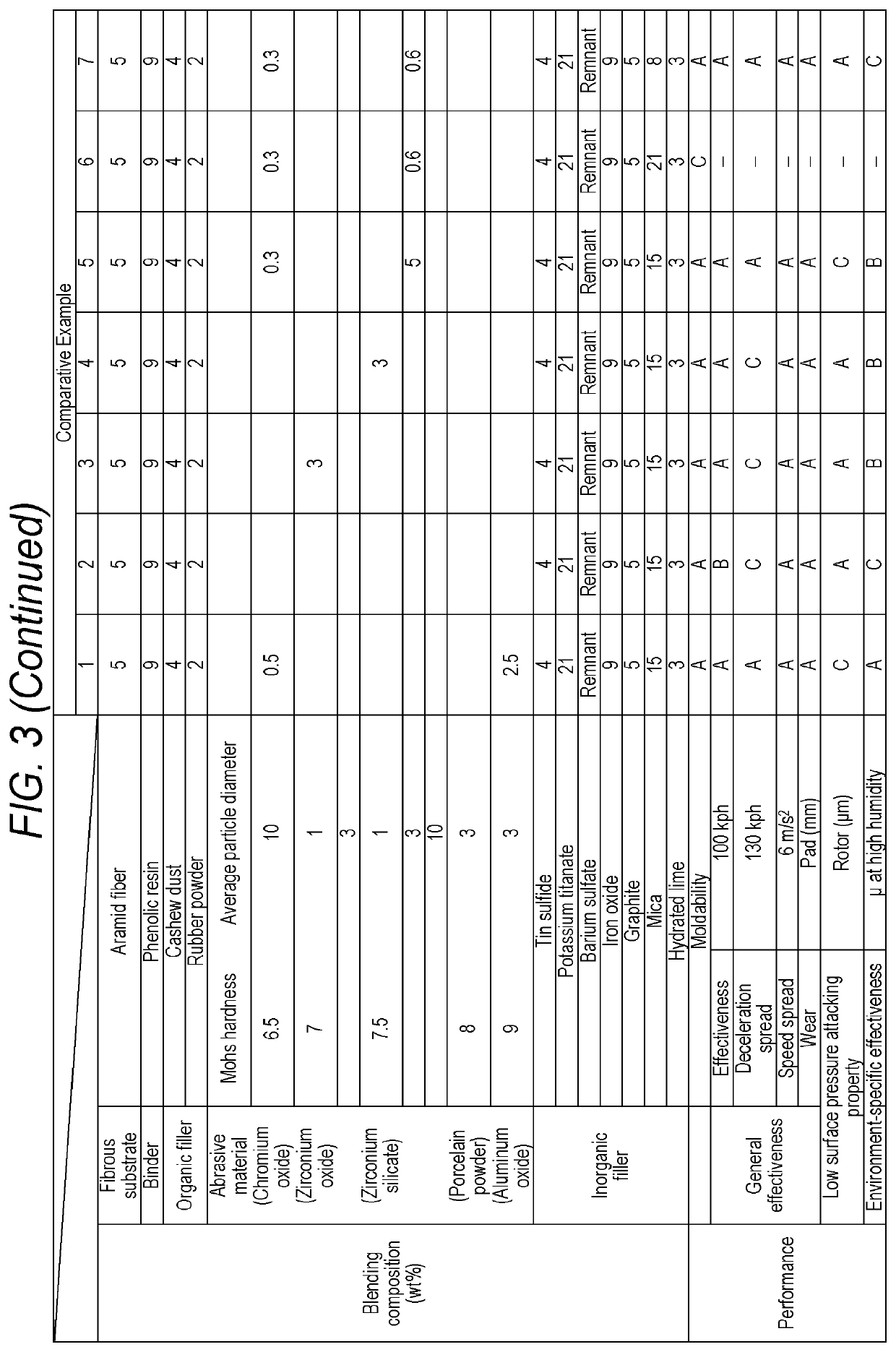Friction material and friction material composition
a technology of friction material and composition, which is applied in the direction of friction lining, mechanical equipment, actuators, etc., can solve the problems of affecting the health of the human body, the smoothing of the friction surface, and the pollution of the brake pad, so as to prevent the fluctuation of the friction coefficient and prevent the braking condition
- Summary
- Abstract
- Description
- Claims
- Application Information
AI Technical Summary
Benefits of technology
Problems solved by technology
Method used
Image
Examples
examples
[1] Examples
first example
[1.1] First Example
[0051]First, a blending composition of a first example (represented as Example 1 in FIG. 3, the same applies hereinafter) will be described.
[0052]Examples of the blending composition of the example roughly include a fibrous base material, a binder, an organic filler, an abrasive material, and an inorganic filler.
[0053]Hereinafter, the blending composition of the first example will be described in detail.
[0054]In the first example, 5 wt % of an aramid fiber was blended as the fibrous base material.
[0055]In the first example, 9 wt % of a phenol resin was blended as the binder.
[0056]In the first example, 4 wt % of a cashew dust and 2 wt % of a rubber powder (SBR) were blended as the organic filler.
[0057]In the first example, 0.2 wt % of chromium oxide (average particle diameter 10 μm) having a Mohs hardness of 6.5 was blended as the first abrasive material, and 0.2 wt % of zirconium silicate (average particle diameter 3 μm) having a Mohs hardness of 7.5 was blended a...
second example
[1.2] Second Example
[0059]A blending composition of a second example was different from the blending composition of the first example in that, regarding blending of the abrasive material, 0.5 wt % of chromium oxide (average particle diameter 10 μm) having a Mohs hardness of 6.5 was blended as the first abrasive material, and 2.5 wt % of zirconium oxide (average particle diameter 1 μm) having a Mohs hardness of 7 was blended as the second abrasive material.
[0060]Other blending compositions are the same as those of the first example.
PUM
| Property | Measurement | Unit |
|---|---|---|
| average particle diameter | aaaaa | aaaaa |
| average particle diameter | aaaaa | aaaaa |
| particle diameter | aaaaa | aaaaa |
Abstract
Description
Claims
Application Information
 Login to View More
Login to View More - R&D
- Intellectual Property
- Life Sciences
- Materials
- Tech Scout
- Unparalleled Data Quality
- Higher Quality Content
- 60% Fewer Hallucinations
Browse by: Latest US Patents, China's latest patents, Technical Efficacy Thesaurus, Application Domain, Technology Topic, Popular Technical Reports.
© 2025 PatSnap. All rights reserved.Legal|Privacy policy|Modern Slavery Act Transparency Statement|Sitemap|About US| Contact US: help@patsnap.com



